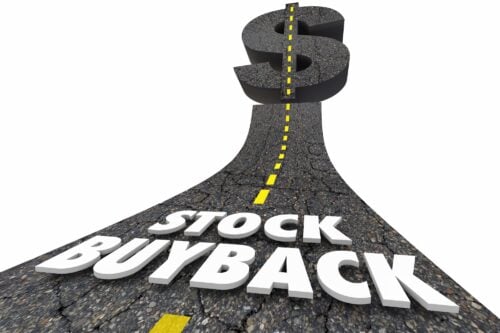When trading, you sometimes have two choices: you can either buy to open or buy to close. So what’s the difference, and which one should you choose? Keep on reading to find out which option is best for you.
What Is a Buy to Open?
A buy-to-open order is a trade used to initiate new positions in the stock market.
This can be an opening order for a put option or call option contract or a new position for stocks, currencies, or futures contracts.
With this type of order, you will receive a notification from your broker if and when your order has been filled.
Buy-to-open orders are not meant to be used as stop losses or exit points in a long-term position.

Suppose you are entering a new open position.
In that case, it is assumed that you will want to hold the position for the long term and take any necessary action (buying additional shares or selling options contracts) as needed during that period.
If you are using this type of order to open an options trading contract, your broker may require that you have enough funds in your account to cover both the option cost and any commissions that might be charged on the trade.
This protection can help prevent unexpected losses if an adverse market movement causes the price of your stock or futures contract to fall below what you paid for it.
What Does Buy to Close Mean?
Buy to close is an order that an investor can use when they want to exit an existing short position.
It’s also sometimes called “buy to cover” since it involves buying back previously sold stock shares that have been purchased – hence, covering one’s previous position.
This order will help protect the investor’s capital since it’s not as risky as allowing their loss to keep increasing.

Another instance that investors may choose to use a buy-to-close order is when they’re trying to protect their realized profits from falling further or even being completely erased.
What Is the Difference Between Buy to Close and Sell to Close?
The difference between buy to close and sell to close is the direction taken when closing a position.
When you buy to close, you are closing a position by purchasing shares of the same security you currently hold in your portfolio or trade account.
Sell to close means exactly what it sounds like – you are covering your costs by receiving credit for shares of the same security.
What Is the Difference Between Buy to Open and Sell to Open With Options?
The difference between buy to open and sell to open with options is a matter of the direction of the trade.
When you buy an option, you hope the underlying security – such as a stock or ETF – will increase in value.
In this case, you would execute a buy-to-open order.

This means you would purchase an options contract at the current price and hope it goes up so that your investment pays off with a profit when it expires.
Conversely, if you sold (or shorted) an option, you would be betting on the underlying asset going down instead of up in value.
In this case, you would execute a sell-to-open order for the options contract, meaning that you are selling an option at the current price and hoping to profit when the underlying security turns out to be less valuable than before.
What Is a Buy-to-Close Example?
In a buy-to-close transaction, an investor who has already bought a particular stock will often sell it again later if he or she believes its price has risen and wants to take advantage of this increase by selling the stock at its current higher price.
Example Scenario:
Jane is a longtime investor who has been following the options market for years.
She recently bought shares in Company X because she believes its stock price will likely increase significantly over the next few months.
However, she still somewhat doubts this prediction and wants to take advantage of any potential changes in her opinion regarding the stock’s future value.
To do this, Jane enters into a buy-to-close transaction with her broker.

This involves selling Company X stock that she already owns at an agreed-upon price (strike price) per share and then repurchasing those shares later if needed.
If her predictions about the stock prove correct and its price does indeed rise significantly in the near future, Jane will be able to sell it at a profit.
If not, she can simply hold onto the stock and wait for its price to increase later. Either way, Jane can use her buy-to-close order to maximize her profits in the current market conditions.
What Is the Difference Between Sell to Open and Sell to Close?
Sell to open refers to an instruction given by a trader or investor to sell or short an option that is currently not owned by the account holder.
When this transaction takes place, it creates a new position for the account holder, potentially increasing their risk exposure.
On the other hand, sell to close means closing out an existing position by selling what was previously purchased.
In general, sell-to-open trades are meant to build a position, while sell-to-close trades are made to reduce risk.
Several factors decide whether to make a sell-to-open or sell-to-close transaction.

For example, if a trader is building their portfolio and wants to purchase an option on a particular stock, they would execute a sell-to-open order to establish their position.
However, if that same trader wanted to reduce the amount of risk on their account by taking profits or closing out one of their positions, they would use the sell-to-close command instead.
This trade involves selling what is already owned, which can also help distinguish it from other transactions like buy-to-open or buy-to-close orders.
Can You Buy to Close at Any Time?
Yes, you can buy to close your position any time before the expiration date – even if you’ve only held it for a few hours or days.
This can be useful if you’ve made a bad trade and want to cut your losses early or if you think the stock market might drop soon and want to protect any profits.
When Should You Close an Option?
One of the most common mistakes made by traders is not knowing when to close out a position in the stock market.
Many investors will hold onto their positions until the very end – either in an attempt to make more money or fearing that their losses might escalate further if they close out their position.
However, this mindset can be crippling for your success as a trader because it means that you cannot resist the temptation of riding your gains.
Many successful traders often recommend closing out an option before it expires or if it reaches 50% of its potential gains.
Although several studies have indicated that 50% of the maximum gain is a perfect exit position, you can still go higher if you like.
If you can do this early on, it will drastically affect your risk/reward ratio since profits will be much more predictable and stable compared to the entire position.
Final Thoughts
Deciding whether to buy or sell an options contract depends on your goals for that particular trade.
The term “buy to open” is associated with entering a new position. In contrast, “buy to close” means exiting a current position.
An investor may buy to close at any time before the expiration of an option contract; however, it is usually recommended that they do so when the option reaches 50% percent of its maximum potential gains or before the option expires.
Understanding these two terms allows you to make more informed decisions when trading options contracts.
Related:


 Tags:
Tags:










